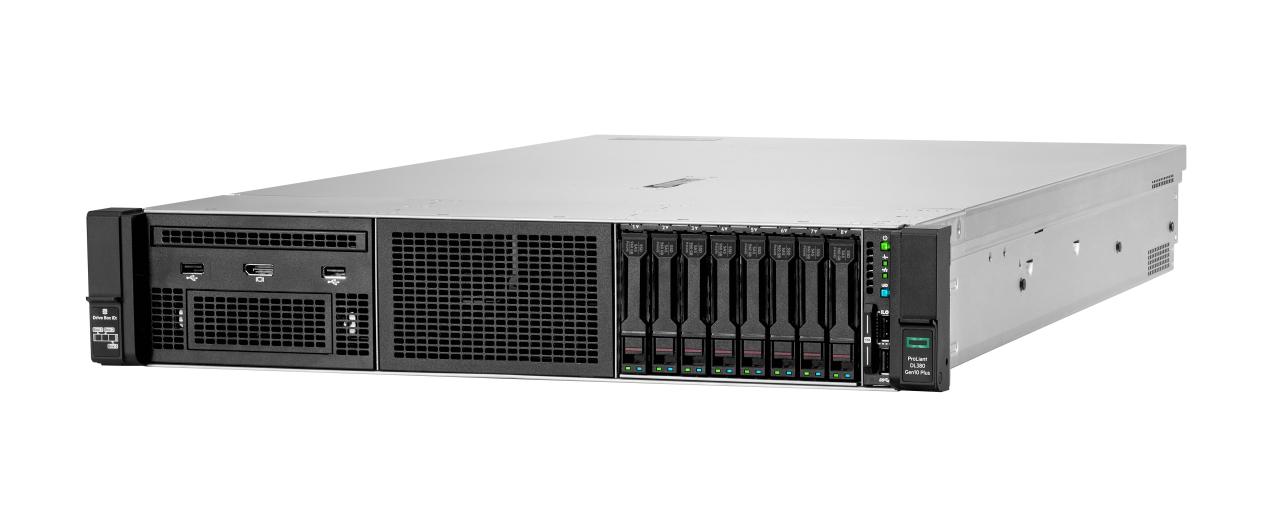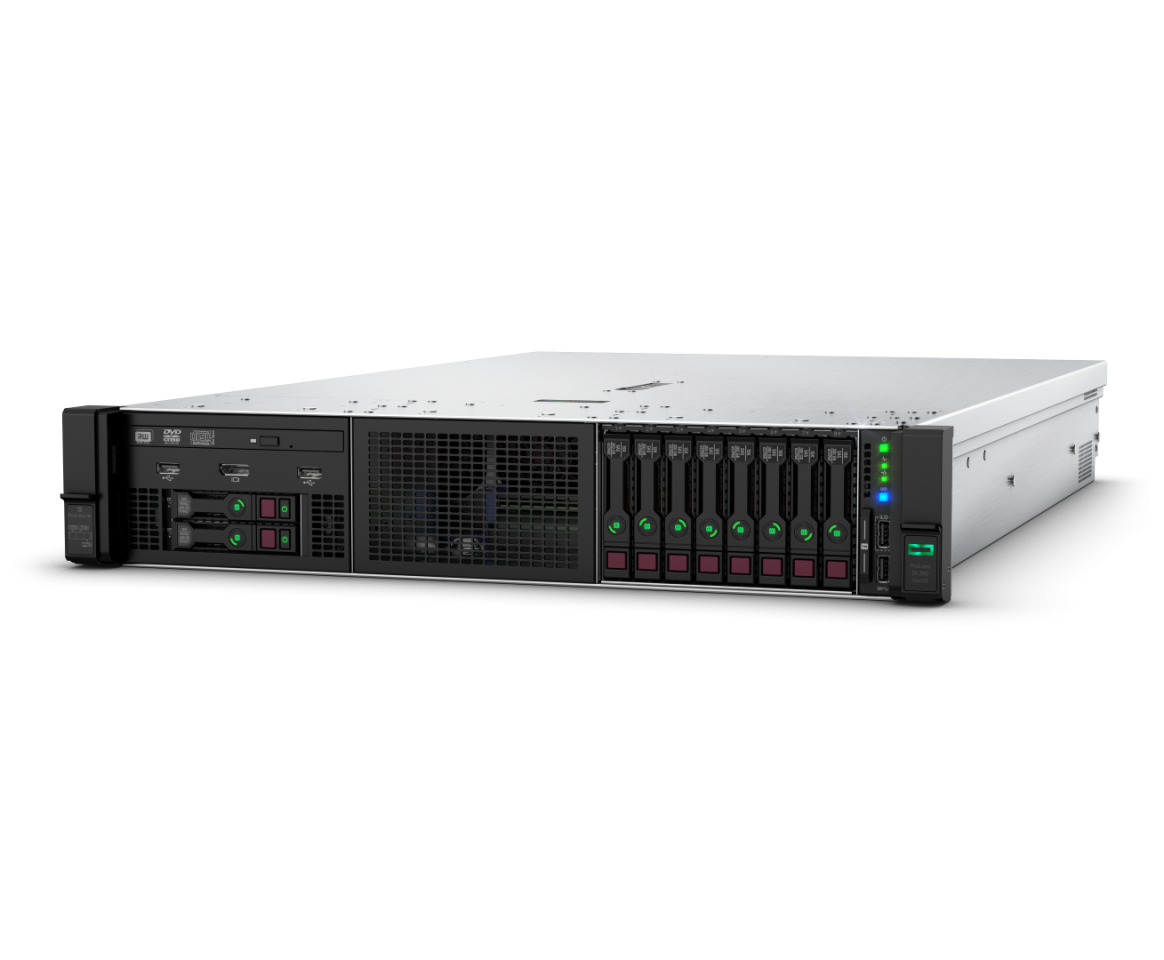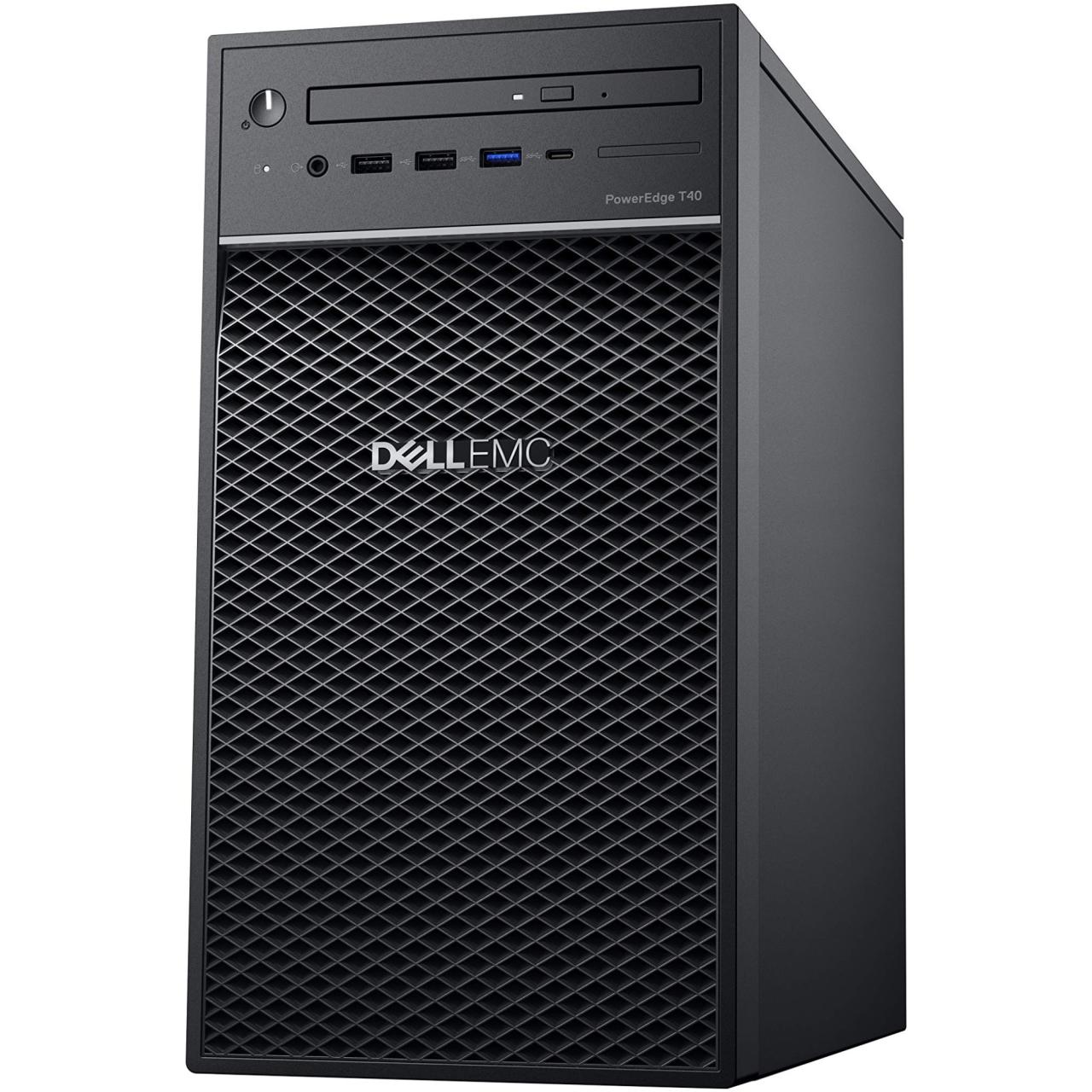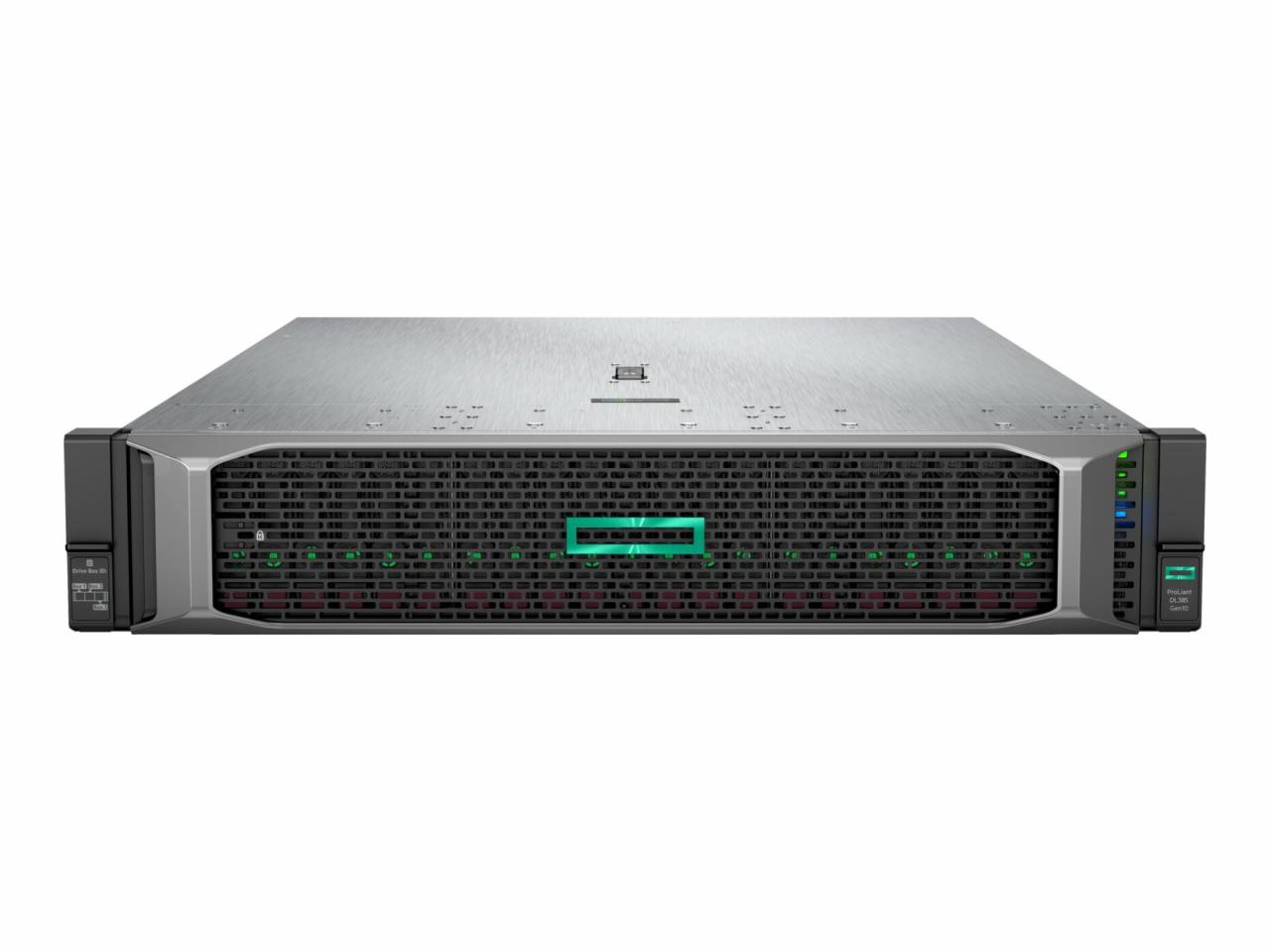The ProLiant DL380 Gen10 is a powerful server designed to meet the demanding needs of modern businesses. This server boasts a range of impressive features, including high-performance processors, flexible memory configurations, and robust storage options. It’s a versatile solution that can handle a wide array of workloads, from virtualization and database management to high-performance computing and demanding applications.
The DL380 Gen10 is built with scalability in mind, allowing businesses to adapt their infrastructure as their needs evolve. It offers a range of customization options, enabling users to tailor the server to their specific requirements. Whether you’re looking to optimize performance, enhance security, or simplify management, the DL380 Gen10 provides the tools and features to achieve your goals.
ProLiant DL380 Gen10 Server

The ProLiant DL380 Gen10 is a powerful and versatile server designed to meet the diverse needs of businesses and organizations of all sizes. This server is a cornerstone of HPE’s ProLiant server portfolio, known for its reliability, performance, and security features.
Key Features and Benefits
The ProLiant DL380 Gen10 offers a wide range of features and benefits that contribute to its exceptional performance and versatility.
- High Performance: The DL380 Gen10 is powered by Intel Xeon Scalable processors, providing significant processing power for demanding workloads. This translates to faster application execution, enhanced data processing, and overall improved system performance.
- Scalability: The server supports up to 24 DIMM slots, allowing for ample memory capacity. Additionally, it offers flexible storage options, including support for NVMe drives, providing high-speed data access and storage capacity to meet evolving business needs.
- Security: Security is paramount in today’s digital landscape. The DL380 Gen10 incorporates robust security features like Silicon Root of Trust, iLO 5 with security features, and firmware protection, ensuring data integrity and system protection from malicious threats.
- Reliability: HPE ProLiant servers are renowned for their reliability, and the DL380 Gen10 upholds this tradition. The server is designed with high-quality components and undergoes rigorous testing, minimizing downtime and maximizing uptime.
- Energy Efficiency: The DL380 Gen10 incorporates energy-saving features, including power-efficient processors and optimized cooling solutions, contributing to reduced energy consumption and lower operational costs.
Target Audience and Use Cases
The ProLiant DL380 Gen10 server caters to a wide range of businesses and organizations with diverse needs.
- Small and Medium Businesses (SMBs): The server can support growing businesses by providing the performance, scalability, and security required for their applications and data storage needs.
- Large Enterprises: Enterprises with demanding workloads can leverage the DL380 Gen10’s power and scalability to handle critical applications, big data analytics, and mission-critical operations.
- Cloud Service Providers: Cloud providers can use the server to build and manage their infrastructure, offering reliable and scalable cloud services to their customers.
- Research Institutions: Research institutions often require high-performance computing capabilities for simulations, data analysis, and scientific research. The DL380 Gen10 can provide the necessary computing power for these tasks.
Performance and Scalability: Proliant Dl380 Gen10
The ProLiant DL380 Gen10 server boasts impressive performance and scalability, making it a versatile choice for various workloads. Its performance benchmarks across diverse applications and its ability to adapt to evolving needs with flexible configuration options contribute to its appeal.
Performance Benchmarks
The DL380 Gen10 excels in various workloads, demonstrating its robust performance capabilities. For instance, in virtualized environments, it can support a high number of virtual machines with minimal performance degradation. Its powerful processors and ample memory ensure smooth operation even under heavy workloads. In database applications, the server delivers impressive performance with its optimized storage and networking configurations. Its ability to handle large data volumes efficiently makes it suitable for data-intensive tasks.
Scalability Options
The DL380 Gen10 offers significant scalability options, allowing users to adapt the server to their changing needs. The server can be configured with up to two Intel Xeon Scalable processors, providing a high degree of processing power. The memory capacity can be scaled up to 3 TB, enabling the server to handle demanding applications that require large amounts of data. The server supports various storage options, including NVMe drives for high-speed data access and SAS drives for cost-effective storage solutions.
Performance Impact of Different Configurations
Different configuration choices can significantly impact the performance of the DL380 Gen10 server. For instance, choosing a higher-performance processor will lead to faster processing speeds, particularly for compute-intensive workloads. Similarly, increasing the amount of memory can enhance the server’s ability to handle complex applications that require large amounts of data. Selecting a faster storage solution, such as NVMe drives, can significantly improve data access times, resulting in better overall performance.
Management and Security
The ProLiant DL380 Gen10 offers a comprehensive suite of management tools and robust security features to ensure optimal performance, reliability, and data protection. This section delves into the management tools and security features available for the DL380 Gen10, covering hardware-based security and firmware protection, and provides insights into configuring and managing security settings.
Management Tools
The DL380 Gen10 is equipped with a range of management tools that simplify server administration and monitoring. These tools provide comprehensive insights into server health, performance, and resource utilization, enabling proactive maintenance and troubleshooting.
- iLO 5: The integrated Lights Out (iLO) 5 is a powerful management interface that allows remote server management, including power control, BIOS updates, and system monitoring. It provides a secure and reliable way to access and manage the server from anywhere, even when the operating system is not running.
- HP OneView: HP OneView is a software-defined infrastructure management platform that simplifies server provisioning, configuration, and lifecycle management. It offers a unified interface for managing multiple servers, storage, and networking devices, enabling automation and streamlining server deployments.
- HP Insight Control: HP Insight Control is a comprehensive management solution that provides a centralized platform for monitoring and managing servers and other IT infrastructure components. It offers advanced features such as proactive health monitoring, performance optimization, and security management.
Security Features
The DL380 Gen10 incorporates advanced security features to protect against threats and ensure data integrity. These features include hardware-based security mechanisms and firmware protection, enhancing the server’s resilience against attacks.
- Silicon Root of Trust: The Silicon Root of Trust is a hardware-based security feature that ensures the integrity of the server’s boot process. It verifies the authenticity of the firmware and operating system before loading them, preventing malicious software from compromising the server.
- Secure Boot: Secure Boot is a security feature that prevents unauthorized software from loading during the boot process. It ensures that only trusted software is loaded, protecting the server from malware and other threats.
- Trusted Platform Module (TPM): The Trusted Platform Module (TPM) is a hardware-based security chip that provides cryptographic operations and secure storage for sensitive data. It protects the server from unauthorized access and ensures the integrity of data stored on the server.
- Firmware Protection: The DL380 Gen10 offers firmware protection mechanisms that prevent unauthorized modifications to the server’s firmware. This helps ensure the integrity and security of the firmware, protecting the server from attacks that target the firmware.
Security Settings
Configuring and managing security settings is crucial for maintaining a secure server environment. The DL380 Gen10 provides a comprehensive set of security settings that can be customized to meet specific security requirements.
- iLO Security: iLO 5 offers robust security features, including secure access control, authentication, and encryption. It allows you to restrict access to the server, authenticate users, and encrypt communication between the server and the management interface.
- Operating System Security: The operating system installed on the server provides a wide range of security settings, including user accounts, access control, and firewall configuration. It is essential to configure these settings to restrict access to the server and protect sensitive data.
- Network Security: The network infrastructure connected to the server also plays a critical role in security. It is important to configure network security settings, such as firewalls and intrusion detection systems, to prevent unauthorized access to the server.
Deployment and Configuration
The ProLiant DL380 Gen10 server offers flexibility in deployment and configuration, enabling users to tailor the server to their specific needs. This section will guide you through the process of deploying and configuring the DL380 Gen10 server, covering aspects such as operating system installation, network settings, and deployment options.
Installing the Operating System
Installing the operating system is the first step in deploying the DL380 Gen10 server. This process involves booting the server from a bootable media, such as a USB drive or DVD, and following the prompts provided by the operating system installer.
The following steps provide a general guide for installing an operating system on the DL380 Gen10 server:
- Prepare the bootable media: Create a bootable USB drive or DVD containing the operating system installation files. Many operating systems offer tools for creating bootable media from their official websites.
- Connect the bootable media: Connect the bootable media to the server.
- Boot the server: Power on the server and press the appropriate key (usually F9 or F11) to access the boot menu. Select the bootable media as the boot device.
- Follow the installer prompts: The operating system installer will guide you through the installation process, including partitioning the hard drive, selecting the operating system language, and setting up the user accounts.
- Configure network settings: During the installation process, you will be prompted to configure the network settings. This includes specifying the network interface card (NIC) to use, assigning an IP address, and setting up the network mask and gateway.
Configuring Network Settings
Network configuration is crucial for connecting the DL380 Gen10 server to the network and enabling communication with other devices. The server supports various network interfaces, including Gigabit Ethernet, 10 Gigabit Ethernet, and Fibre Channel.
- Network Interface Card (NIC) Configuration: The DL380 Gen10 server offers multiple NIC options. You can configure the NICs to use static IP addresses or obtain addresses dynamically through DHCP.
- Network Settings: Configure the network settings for each NIC, including IP address, subnet mask, gateway, and DNS server addresses. You can access the network settings through the server’s BIOS or the operating system’s network configuration tool.
- Network Management: The server’s integrated management tools allow you to monitor network traffic, manage network security settings, and configure network protocols.
Deployment Options
The DL380 Gen10 server offers flexibility in deployment options, allowing users to choose the best approach for their specific needs.
- Bare-Metal Deployment: In a bare-metal deployment, the operating system is directly installed on the server’s hardware, providing maximum control and performance.
- Virtualized Deployment: Virtualization allows multiple operating systems to run concurrently on a single server, optimizing resource utilization and reducing hardware costs. The DL380 Gen10 server supports various virtualization technologies, including VMware vSphere, Microsoft Hyper-V, and Red Hat Virtualization.
Use Cases and Applications
The ProLiant DL380 Gen10 server is a versatile platform that can handle a wide range of workloads, making it suitable for various use cases and applications across different industries. Its robust hardware and software features, combined with its scalability and performance capabilities, enable organizations to deploy and manage critical applications efficiently.
Virtualization
Virtualization is a key use case for the DL380 Gen10 server. The server’s powerful processors, ample memory, and support for advanced virtualization technologies allow organizations to consolidate multiple physical servers into a single virtualized environment. This can significantly reduce hardware costs, simplify server management, and improve resource utilization.
The DL380 Gen10 server supports leading virtualization platforms, including VMware vSphere, Microsoft Hyper-V, and Red Hat Virtualization. Its support for Intel’s VT-x and AMD’s SVM technologies ensures efficient virtual machine performance.
Database Management
The DL380 Gen10 server is an ideal platform for running demanding database applications. Its high-performance processors, large memory capacity, and support for high-speed storage options can handle the intensive read and write operations required for database management.
The server’s support for various database management systems, including Oracle, SQL Server, and MySQL, allows organizations to choose the best option for their specific needs.
High-Performance Computing (HPC)
The DL380 Gen10 server can be used for high-performance computing (HPC) workloads, such as scientific simulations, financial modeling, and data analysis. Its powerful processors, fast memory, and support for high-speed networking technologies provide the necessary performance for demanding HPC applications.
The server’s support for technologies like Intel’s Omni-Path Architecture (OPA) and NVIDIA’s NVLink allows for high-bandwidth interconnects between nodes, enabling efficient data transfer and parallel processing for HPC workloads.
Real-World Deployments
The DL380 Gen10 server is widely deployed in various industries, including:
- Financial Services: Financial institutions use the DL380 Gen10 server to run critical applications like trading platforms, risk management systems, and customer relationship management (CRM) software.
- Healthcare: Healthcare providers use the DL380 Gen10 server for patient record management, medical imaging, and other healthcare applications.
- Education: Educational institutions use the DL380 Gen10 server for research, teaching, and administrative tasks.
- Manufacturing: Manufacturers use the DL380 Gen10 server for production planning, quality control, and supply chain management.
- Government: Government agencies use the DL380 Gen10 server for various applications, including citizen services, data analysis, and national security.
Comparison with Competitors

The ProLiant DL380 Gen10 is a powerful server that competes with other leading server brands in the market. It’s crucial to understand the strengths and weaknesses of each competitor to make an informed decision based on specific needs and requirements. This section will compare the DL380 Gen10 with its primary competitors, highlighting their key features and advantages.
Key Competitors and their Advantages
The ProLiant DL380 Gen10 faces competition from various server manufacturers, including:
- Dell EMC PowerEdge R740xd: This server offers a robust platform with high-performance computing capabilities. Its advantages include:
- Strong performance for demanding workloads
- Extensive configuration options for customization
- Comprehensive management tools
- Lenovo ThinkSystem SR650: Known for its reliability and scalability, the SR650 is a solid contender. Its advantages include:
- Excellent reliability and stability
- Scalability options for growing businesses
- Competitive pricing
- HPE Synergy: This modular infrastructure platform offers flexibility and scalability. Its advantages include:
- High flexibility and agility
- Simplified management and automation
- Scalability for complex workloads
Comparison of Features and Performance
This table summarizes key features and performance aspects of the ProLiant DL380 Gen10 and its competitors:
| Feature | ProLiant DL380 Gen10 | Dell EMC PowerEdge R740xd | Lenovo ThinkSystem SR650 | HPE Synergy |
|---|---|---|---|---|
| Processor | Intel Xeon Scalable Processors | Intel Xeon Scalable Processors | Intel Xeon Scalable Processors | Intel Xeon Scalable Processors |
| Memory | Up to 3 TB DDR4 | Up to 3 TB DDR4 | Up to 3 TB DDR4 | Up to 3 TB DDR4 |
| Storage | SAS, SATA, NVMe | SAS, SATA, NVMe | SAS, SATA, NVMe | SAS, SATA, NVMe |
| Networking | 1GbE, 10GbE, 25GbE, 100GbE | 1GbE, 10GbE, 25GbE, 100GbE | 1GbE, 10GbE, 25GbE, 100GbE | 1GbE, 10GbE, 25GbE, 100GbE |
| Management | iLO 5, OneView | iDRAC9, OpenManage Enterprise | XClarity Controller, XClarity Administrator | HPE OneView |
| Security | Silicon Root of Trust, Secure Boot | Silicon Root of Trust, Secure Boot | Silicon Root of Trust, Secure Boot | Silicon Root of Trust, Secure Boot |
| Performance | High performance for various workloads | High performance for demanding workloads | Reliable performance for general workloads | Scalable performance for complex workloads |
Factors to Consider When Choosing a Server
Several key factors should be considered when choosing a server:
- Performance Requirements: Consider the workload demands and required processing power. For demanding applications like high-performance computing or large databases, a server with high-performance processors and ample memory is essential.
- Scalability: Determine future growth needs. A server with scalability options for memory, storage, and networking allows for expansion as the business grows.
- Management and Security: Look for servers with robust management tools and comprehensive security features. These tools simplify server administration and enhance data protection.
- Cost: Budget constraints are a significant factor. Consider the initial purchase cost, ongoing maintenance expenses, and potential upgrades.
- Vendor Support: Choose a vendor with reliable support services, including technical assistance, documentation, and training resources.
Customer Reviews and Feedback
Customer reviews and feedback provide valuable insights into the real-world performance and user experience of the ProLiant DL380 Gen10 server. By analyzing user testimonials, we can gain a comprehensive understanding of the server’s strengths, weaknesses, and overall satisfaction levels.
Positive Feedback and Advantages
Positive feedback from users highlights the server’s strengths and key advantages.
- Performance and Scalability: Many users praise the DL380 Gen10’s powerful processing capabilities and scalability, allowing them to handle demanding workloads with ease.
- Reliability and Durability: The server’s reputation for reliability and durability is consistently mentioned, ensuring business continuity and minimal downtime.
- Management and Security Features: Users appreciate the comprehensive management and security features, including iLO5 and the ability to manage multiple servers from a centralized console.
- Deployment and Configuration: The ease of deployment and configuration is a common theme in positive reviews, simplifying the setup process and reducing time to productivity.
Negative Feedback and Drawbacks
While the DL380 Gen10 receives mostly positive feedback, some users have reported drawbacks or areas for improvement.
- Cost: The server’s high price point can be a barrier for some users, especially those with limited budgets.
- Noise Levels: Some users have mentioned that the server can be noisy, particularly under heavy workloads.
- Limited Expandability: The server’s expandability options may be limited for users with highly specialized or demanding requirements.
Overall Satisfaction
Overall, the ProLiant DL380 Gen10 server receives high levels of satisfaction from users. The server’s performance, reliability, and comprehensive management features make it a popular choice for businesses of all sizes. While some users have noted drawbacks, such as cost and noise levels, these are generally outweighed by the server’s overall strengths.
Troubleshooting and Support
The ProLiant DL380 Gen10 is a robust and reliable server, but like any technology, it can encounter issues. Understanding common troubleshooting steps and available support options can help you resolve problems quickly and efficiently.
Common Troubleshooting Steps
Troubleshooting starts with identifying the issue. This can be done by observing symptoms, checking logs, and gathering information about the environment. Here are some common troubleshooting steps:
- Check for power and connectivity issues: Ensure the server is properly plugged in and receiving power. Verify network connectivity and check cable connections.
- Review system logs: The iLO interface provides access to system logs, which can offer insights into potential problems. Look for error messages or unusual events.
- Run diagnostics: HP provides comprehensive diagnostics tools that can help pinpoint hardware issues. Run these tests to identify faulty components.
- Check for software updates: Outdated software can cause compatibility issues. Update the server’s firmware, drivers, and operating system to the latest versions.
- Verify configuration settings: Review the server’s BIOS and operating system settings to ensure they are appropriate for your environment.
- Isolate the problem: If possible, try to isolate the issue to a specific component or software. This can help you narrow down the cause.
- Consult documentation: HP provides comprehensive documentation for the DL380 Gen10, including user manuals, troubleshooting guides, and release notes. Refer to these resources for detailed information and solutions.
Support Options
HP offers a variety of support options to assist you with troubleshooting and resolving issues.
- HP Support Center: This online portal provides access to documentation, knowledge base articles, and troubleshooting guides. You can search for solutions based on specific s or symptoms.
- HP Forums: Engage with other HP users and experts on the HP Forums. Ask questions, share experiences, and find solutions to common problems.
- Technical Support: HP offers various technical support options, including phone, email, and chat. You can contact HP’s support team for assistance with complex issues or for escalated support.
Resolving Common Issues, Proliant dl380 gen10
Here are some common issues and their potential solutions:
- Server not booting: Check for power issues, loose connections, and faulty components. Run diagnostics to identify the problem.
- Network connectivity problems: Verify cable connections, network settings, and driver updates. Check the iLO interface for network-related errors.
- Hardware failures: Run diagnostics to identify faulty components. Replace the defective part with a compatible replacement.
- Software errors: Review system logs, update drivers and software, and check for compatibility issues. Consult documentation for specific error messages.
- Performance issues: Monitor system resources, such as CPU utilization, memory usage, and disk I/O. Optimize system settings, update drivers, and check for resource contention.
Conclusion
The ProLiant DL380 Gen10 server stands as a powerful and versatile solution for businesses of all sizes. Its robust performance, scalability, and advanced security features make it an ideal choice for a wide range of applications.
The DL380 Gen10’s key strengths include its exceptional performance, scalability, and security. Its Intel Xeon Scalable processors deliver unmatched processing power, while its flexible configuration options allow for easy scaling to meet evolving business needs. The server’s comprehensive security features, including HP iLO 5 and Secure Boot, provide robust protection against threats.
The ProLiant DL380 Gen10 server offers a compelling value proposition for businesses seeking a reliable, high-performance, and secure computing platform.
End of Discussion

The ProLiant DL380 Gen10 stands as a testament to HP’s commitment to delivering powerful and reliable server solutions. Its impressive performance, scalability, and security features make it an ideal choice for businesses seeking to optimize their IT infrastructure. With its wide range of applications and strong support network, the DL380 Gen10 empowers organizations to achieve their business objectives and stay ahead in today’s competitive landscape.
The Proliant DL380 Gen10 is a powerful server, but sometimes you need to get your hands dirty and tackle some DIY projects. If you’re looking for inspiration, check out the DIY B&Q website diy b&q for a wide range of projects, from building shelves to creating your own custom furniture.
Once you’ve got your DIY fix, you can return to the Proliant DL380 Gen10 and configure it for your specific needs.


